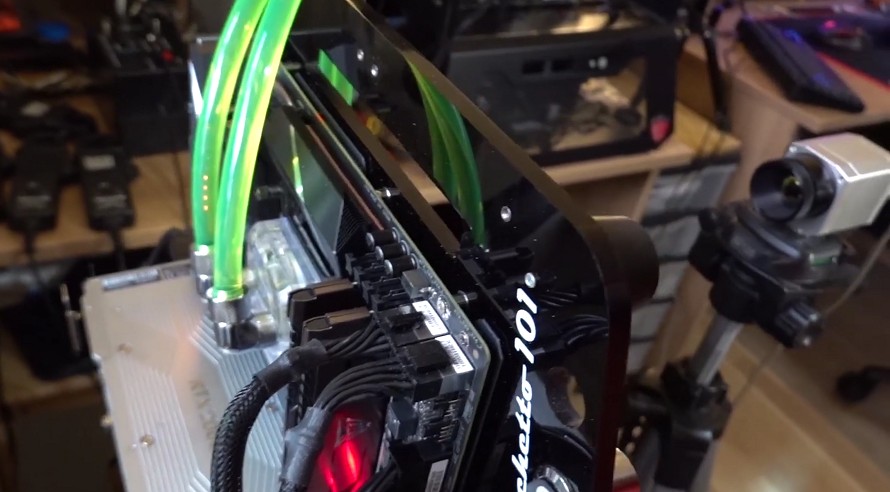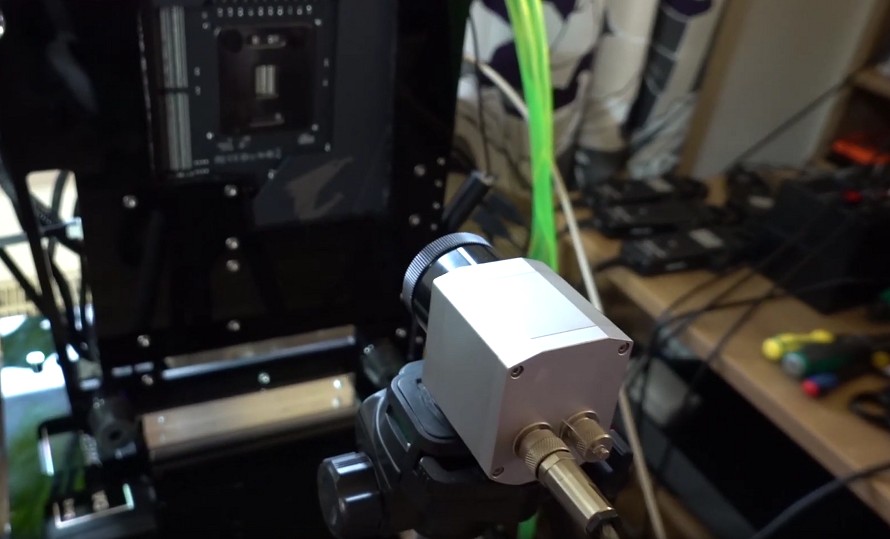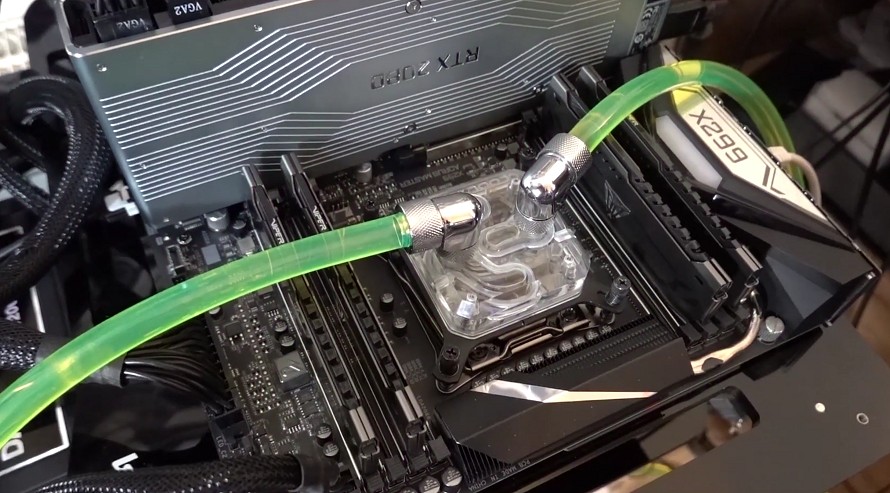If you want to do something new and right, then the effort in the preparation is often enough more than just immense. But analyses of heat generation on and the cooling performance of motherboards are to become one of our unique selling points for the upcoming reviews. How something like that can crash the weekend, I'll show you today.
In order to be able to measure something reproducible and reliable, you first need the right substructure. Since I wanted to start with the X299 Aorus Master anyway, I immediately integrated it into the idea and solution. However, I can spoil in advance that I tested it in advance for its suitability in the flying setup, because to start a new project with a cooling disaster would be quite inappropriate.

In order to be able to realize all this, I modified one of the benchtables, sawed a larger and suitable opening from the thick acrylic on the floor and made the whole thing optionalwith a stable 90° angle. Because you always have to make IR measurements with the thermal imaging camera as perpendicular as possible, it is of course easier to place the buck upright instead of using the camera to make one on mole and perform the measuring act lying down from below. It's also uncool and bad for the back.

The Optris PI640, which has been reliable for years, sits on a fixed tripod and uses the normal optics here, which offers me a good compromise from the field of vision and distance. The subsequent calibration is a slap in the coffin, because I use the same coatings for the printed circuit boards and the metallic surfaces (e.g. for the heatpipes) as well as for the graphics cards. And now I'll take you directly to the lab, because as annoying as YouTube may be, you won't get a moving appearance from the Sunday Mass (Worstpielkasse, I know) anywhere else:
But the back is only half the price, because who can easily check by laying on their hands whether the advertised heatpipes really work? To do this, I simply turn the upper mounting plate of the benchtable over again and put the thick ship back horizontally. Conversion. It doesn't even take 2 minutes, done!

The back goes, the VRM cooler with heatpipe comes. And I was really curious whether this heatpipe is not only an optical gimmick (as unfortunately seen many times), but also whether the thing does what one has come up with the name for. How good this looks in the specific case and how I had to strain my ears again (chilling), you can see in the next video:
So, and now someone is saying, a set of good, closed headphones would be a pointless misinvestment. The cool thing gasp and rumbles like an old Russian fridge from the 1970s. But it works and that's the main thing. Bent ears would then only be a collateral damage to be accepted.
I spent the weekend alone in this setup, but be it. So I am well positioned for all upcoming tests and we had already devised the audio checks with all the tensions. Then all that is missing is the new benchtable for power consumption, sSDs and the appropriate benchmark software. But I will still be struggling. It's just worth it to me. 🙂






























Kommentieren